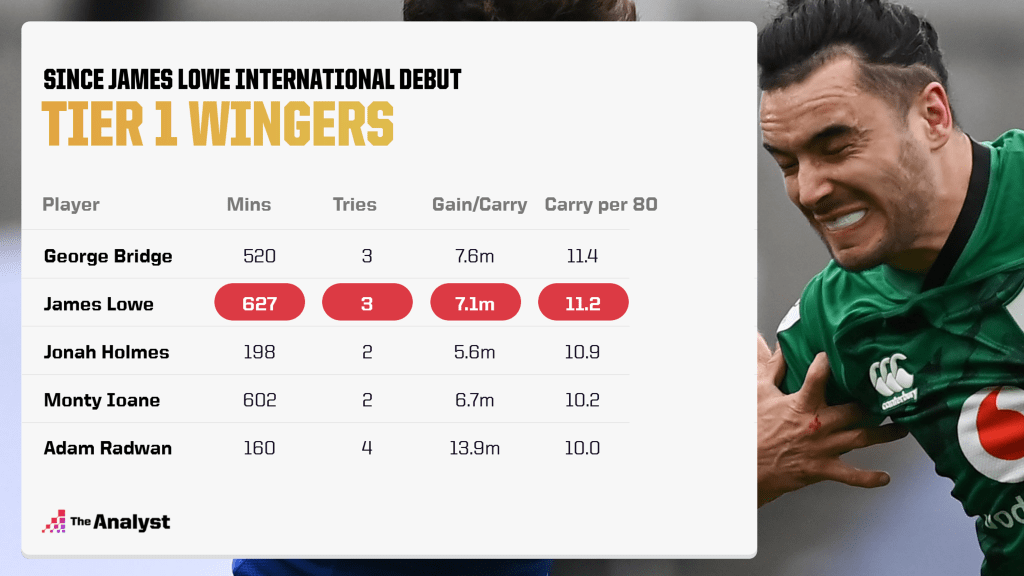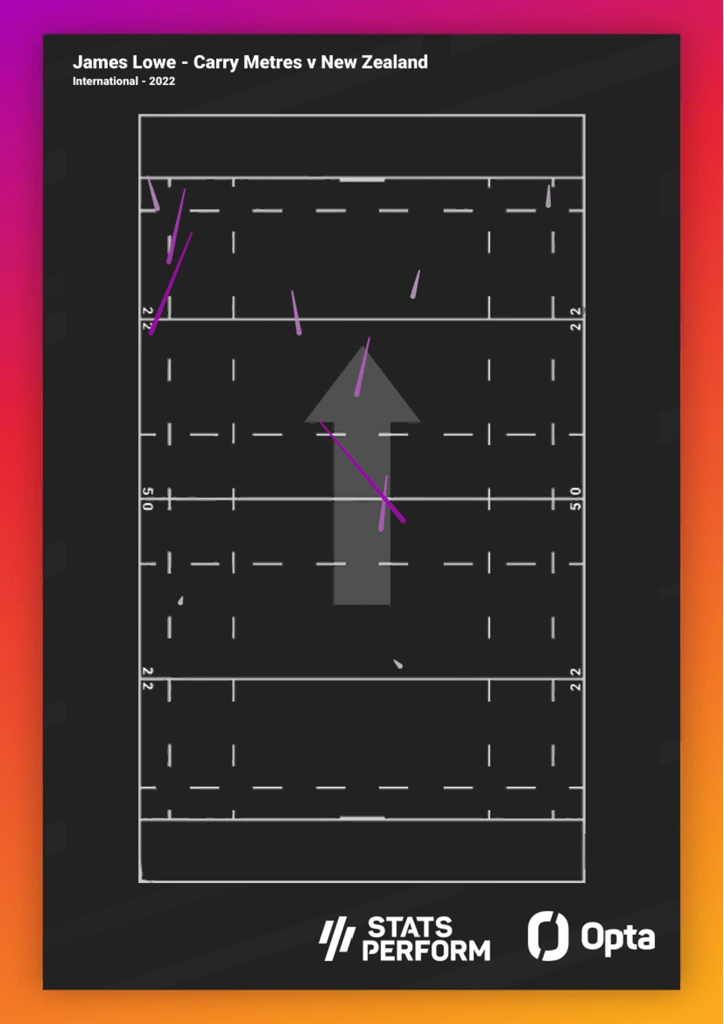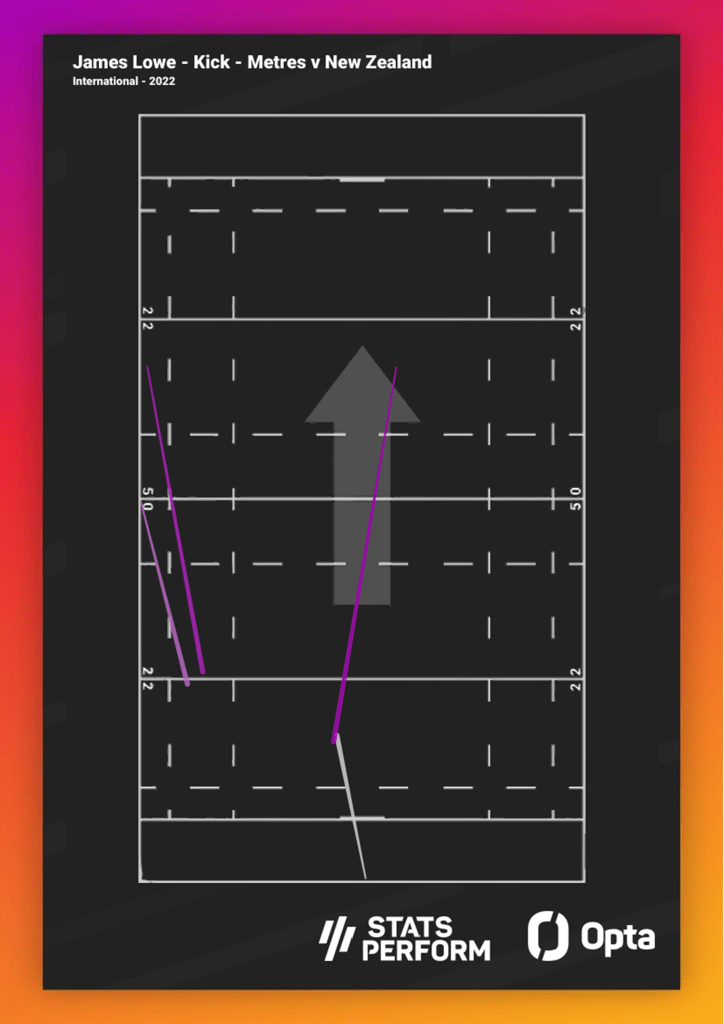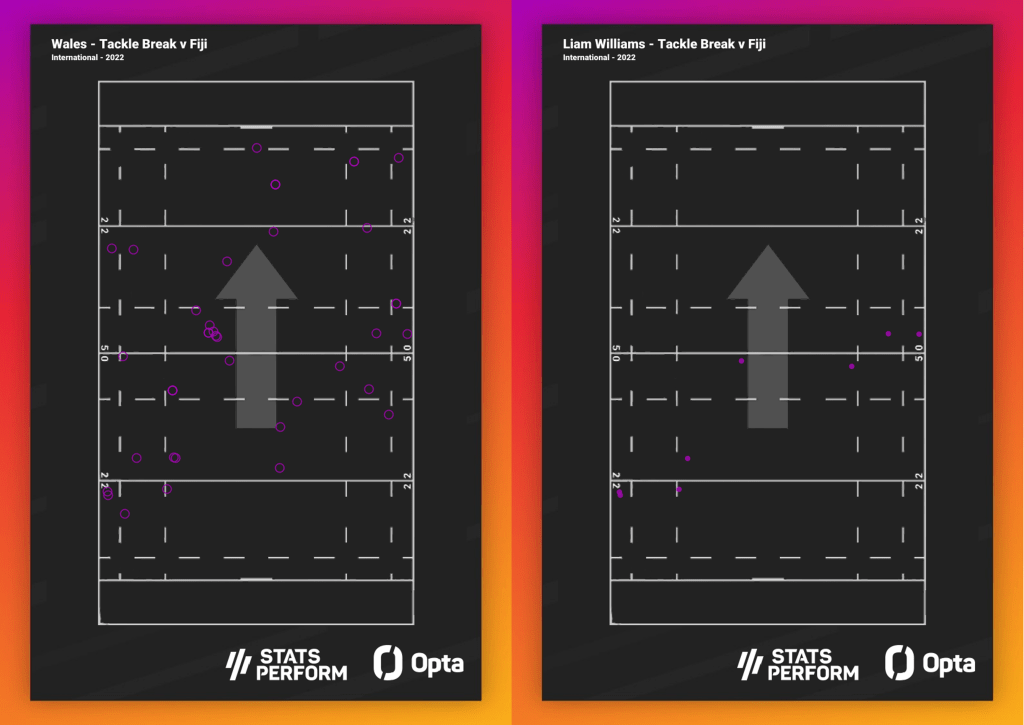Welcome to The Breakdown, our weekly rugby blog for the 2021-22 Autumn Internationals, where we use Opta’s official rugby data to dissect what just happened and why.
High for Lowe
With a population of just over five million, New Zealand may be a relatively small nation, but they pack a formidable punch in the sporting world. Failure is not in their DNA, so this weekend will have been a real gut punch. Not only did the Black Caps lose the Men’s T20 Cricket World Cup final to Trans-Tasman rivals Australia, but both the All Blacks and Black Ferns were defeated as well.
The Black Ferns are now on a three-game losing streak after being thrashed twice by England before crossing La Manche to also be comfortably dispatched by Les Bleues. A major rebuilding programme is needed for them if they are to defend their Rugby World Cup title on their own patch next year.
Meanwhile, the All Blacks have found themselves somewhat of a bogey team in Ireland. Having gone undefeated against them in their initial 28 encounters (W27, D1), they have now lost three of their last five. Ireland’s performance this weekend will rank as one of their greatest ever, and one of the standout performances in the match was by former Maori All Black, James Lowe.
Lowe was born in Nelson, NZ, and cut his teeth playing for local club the Tasman Makos, before graduating to Super Rugby side the Chiefs. In 2017 he signed for Leinster and his journey to play for the Men in Green began. His performance this weekend clearly mattered a huge amount to him and with his first-half try and crucial tackle in the closing stages, his ‘10-point’ contribution could easily be labelled as game-defining.
Since his debut in the United Rugby Championship (/PRO14/Rainbow Cup), Lowe tops the try-scoring charts alongside Duhan van der Merwe, while also sitting sixth for clean breaks (54) and eighth for metres gained (2,443). His rise to the Ireland side was somewhat inevitable based on this form as well as his pedigree, and in this performance alone he could well have cemented his position in the XV for a few years to come.

One of Lowe’s strengths is undoubtedly his industrious nature, and he looks to get on the ball as often as possible. He’s averaged 11 carries per game across his eight caps so far, beating 21 defenders and gaining 78 metres on average per match. Lowe’s average of 11.2 carries per 80 minutes is the second-highest rate of any of the 45 Tier 1 wingers to play 150+ minutes since he made his debut in 2020, making a solid 7.1 metres gained per carry as well.

In this match, his cover tackle in the 72nd minute on the halfway line stopped a threatening All Blacks counter-attack and allowed Joey Carberry to extend the home side’s lead from the tee after Peter O’Mahony followed his tackle with a textbook turnover. Having had a slightly more muddled role in previous matches and tasked with providing a more tactical kicking approach, this game saw Lowe take the game on more directly, kicking just four times, one of which was to end the match by kicking the ball behind into the raucous crowd. As he finds his feet on the international stage, he will undoubtedly be a huge threat for Andy Farrell’s outfit.


Wales Make Their Numbers Count
Wales winning against 14 men has become a bit of a cliché in men’s rugby in recent years, but once again they followed this path to glory in their game against Fiji this weekend. The tourists won plenty of plaudits for their own performance in Cardiff. Trademark physical rugby laced with breath-taking attacking flair was what the crowds had paid to see and it’s exactly what they got. The hosts played their part too and, in the end, notched up a victory to end a four-game winless run (D1, L3).
Wales’ tally of 41 tackle breaks was the second most they’ve made in a match in the last 10 years (43 vs. Uruguay at the 2019 RWC), with those breaks coming all over the pitch, including a flurry on the halfway line to open up the space in the backfield. Liam Williams accounted for eight of these defenders beaten. Only once in his career has he beaten more in a Test match, beating 11 against the same opponents back in 2014.

It can often be a challenge playing against the slightly looser and more dangerous style of play that the Pacific Nations offer. Training ground models and structures have to be replaced by dynamic and adaptive thinking. Assisted by their numerical advantage, Wales finally grasped this in the final quarter and put the game to bed, but they will want to sharpen up if they are to gain the same result against Australia this weekend.
The penalty count sat at 13 each over the 80 minutes, but it was the three cards (one red, two yellow) that cost Fiji dearly. Eroni Sau became the fifth player to be sent off against Wales in 2021. In total, the other Tier 1 nations have benefitted from just six red cards being shown to their opponents in the calendar year. Across their 11 games in 2021, from five red cards and eight yellow cards, Wales have benefitted from 295 minutes of playing time against reduced numbers (of a possible 880), which is over a third of their playing time.
Youth Shines For England Again
England’s Autumn Series so far has been a tale of youth blended with experience and this came to the fore on Saturday when they hosted Australia. Lauded in last week’s Analyst Breakdown, Marcus Smith started for Eddie Jones’ side with Farrell alongside to offer a first receiver option, plus the option of Henry Slade as well. Jones’ stance that shirt numbers are becoming redundant in a sport where things are kept fluid and players play what is in front of them could suit this crop of talented young players and if Smith is given the space to manoeuvre, he will undoubtedly flourish.
However, it was another young starlet that took home the Bollinger this week as 19-year-old Freddie Steward shone in just his fourth cap. A try helped to gloss the performance, but his all-round skills are what set him apart: solid in the air, solid in defence and a real handful with ball in hand.
He looks like he has been playing international rugby all his life, when in reality he only started his first Premiership match in August 2020. 7/7 catches, including three from kick offs, were the icing on the cake for Steward. Nothing impresses more than a full-back defusing everything aerial that comes his way.
The one challenge that Jones will face is how to fit so many different talents into the XV. Max Malins looks to have a bright future ahead of him, whilst Elliot Daly will want to add to his tally of 52 caps and make a bid for the next Rugby World Cup in 2023. Manu Tuilagi was deemed undroppable this week and shifted to the wing, but you’d think that scenario is unlikely when Jones has a full complement of back three players to pick from.
Enjoy this? Subscribe to our mailing list to receive exclusive weekly content.
Banner design from Matt Sisneros.
